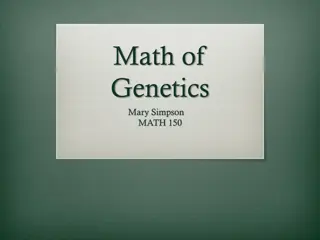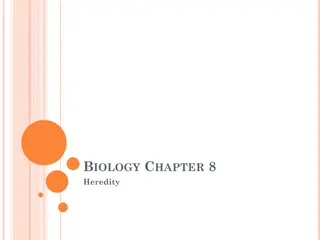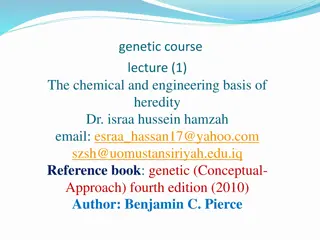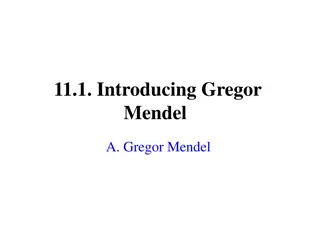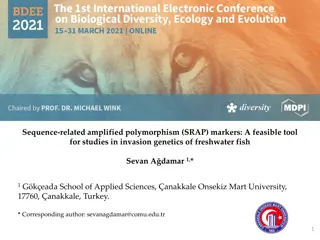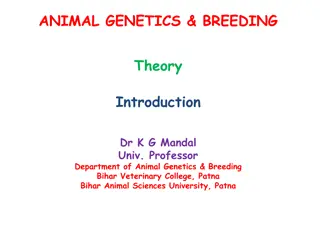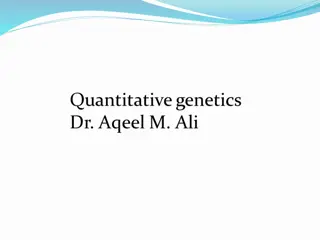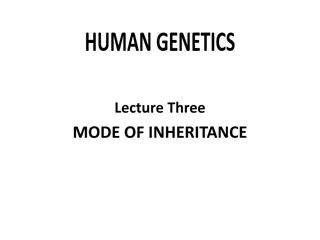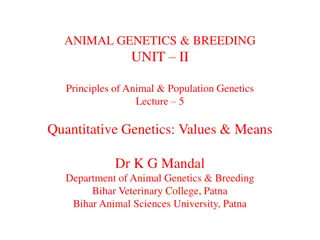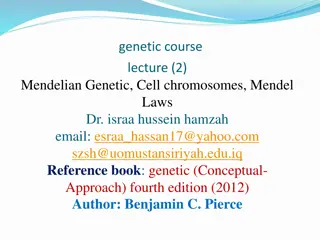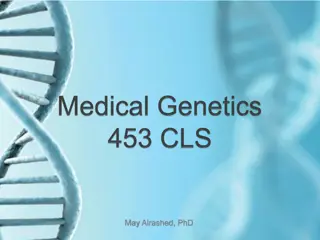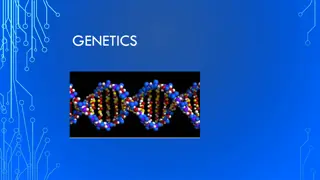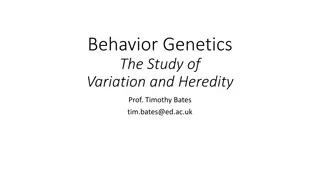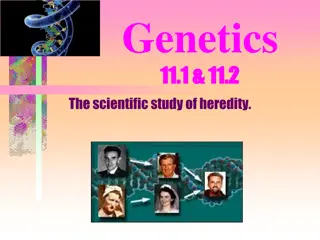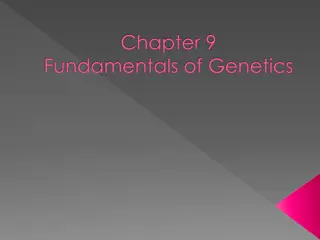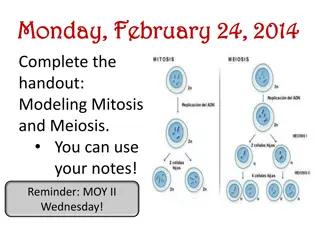Gregor Mendel: The Grandfather of Genetics
Mendel, the monk who revolutionized genetics through carefully planned pea experiments, discovered the principles of heredity and segregation. His impact extends beyond genetics, influencing a wide range of scientific disciplines. By studying pea plants in an abbey garden in the 19th century, Mendel laid the foundation for modern genetics, demonstrating the segregation of alleles during gamete production and establishing terminology still used today.
Uploaded on Feb 20, 2025 | 0 Views
Download Presentation

Please find below an Image/Link to download the presentation.
The content on the website is provided AS IS for your information and personal use only. It may not be sold, licensed, or shared on other websites without obtaining consent from the author.If you encounter any issues during the download, it is possible that the publisher has removed the file from their server.
You are allowed to download the files provided on this website for personal or commercial use, subject to the condition that they are used lawfully. All files are the property of their respective owners.
The content on the website is provided AS IS for your information and personal use only. It may not be sold, licensed, or shared on other websites without obtaining consent from the author.
E N D
Presentation Transcript
Gregor Mendel The Grandfather of Genetics
Mendel Modern genetics had its beginnings in an abbey garden, where a monk named Gregor Mendel documented a particulate mechanism of inheritance. He discovered the basic principles of heredity by breeding garden peas in carefully planned experiments. His approach to science had been influenced at the University of Vienna by one of his professors: the physicist Doppler.
Mendels work In order to study inheritance, Mendel chose to use peas, probably as they are available in many varieties. The use of plants also allowed strict control over the mating. He chose to study only characters that varied in an either-or rather than a more-or-less manner.
Genetic crosses To hybridise 2 varieties of pea plants, Mendel used an artist s brush. He transferred pollen from a true breeding white flower to the carpel of a true breeding purple flower.
Tracking heritable characteristics Mendel tracked heritable characters for 3 generations. When F1hybrids were allowed to self- pollinate a 3:1 ratio of the 2 varieties occurred in the F2 generation.
Mendels law of segregation By carrying out these monohybrid crosses, Mendel determined that the 2 alleles for each character segregate during gamete production. Mendel discovered this c.1860. DNA was not discovered until 1953.
Mendels terminology True breeding: When the plants self-pollinate, all their offspring are of the same variety. Hybridisation: Mating, or crossing, of two varieties. Monohybrid cross: A cross that tracks the inheritance of a single character. P generation: True breeding parents. F1generation: (first filial) Hybrid offspring of the P generation. F2generation: (second filial) Offspring from the self-fertilisation of the F1hybrids.
Mendels impact Mendel s theories of inheritance, first discovered in garden peas, are equally valid for figs, flies, fish, birds and human beings. Mendel s impact endures, not only on genetics, but on all of science, as a case study of the power of hypothesis/deductive thinking.
This powerpoint was kindly donated to www.worldofteaching.com http://www.worldofteaching.com is home to over a thousand powerpoints submitted by teachers. This is a completely free site and requires no registration. Please visit and I hope it will help in your teaching.


